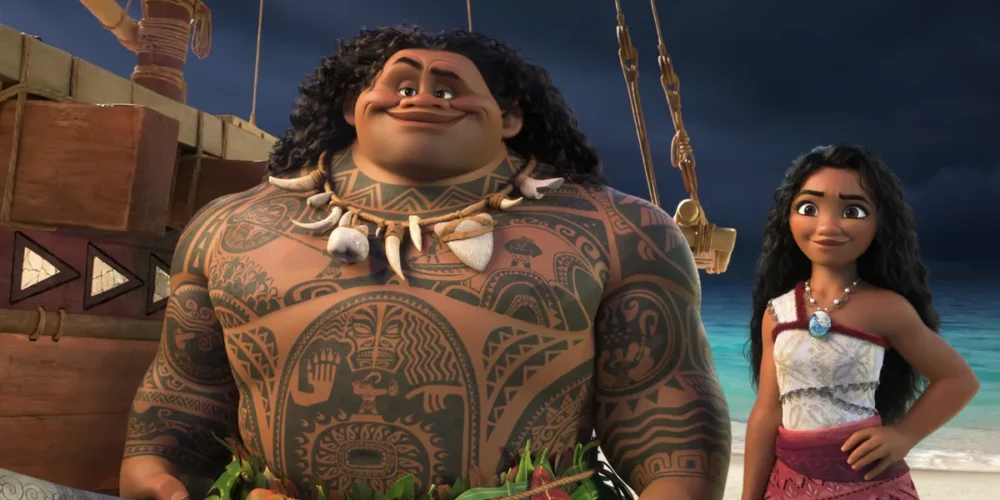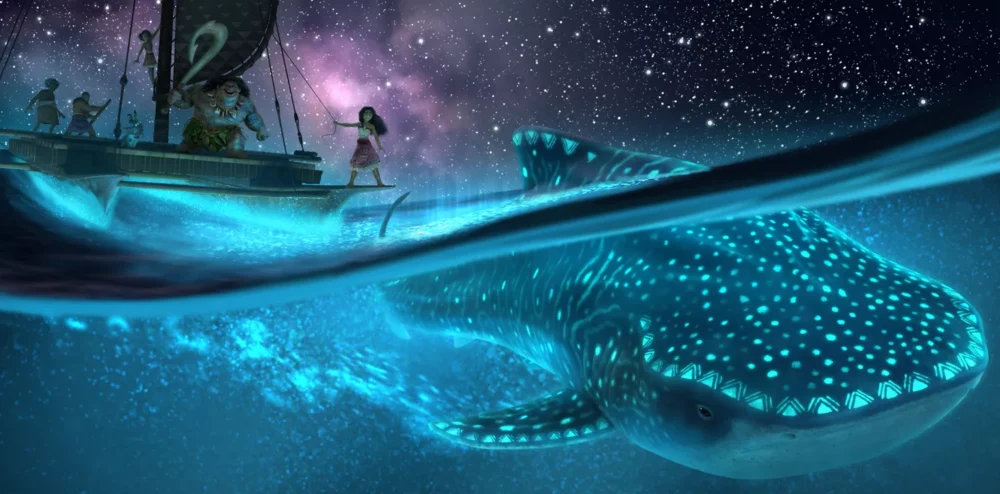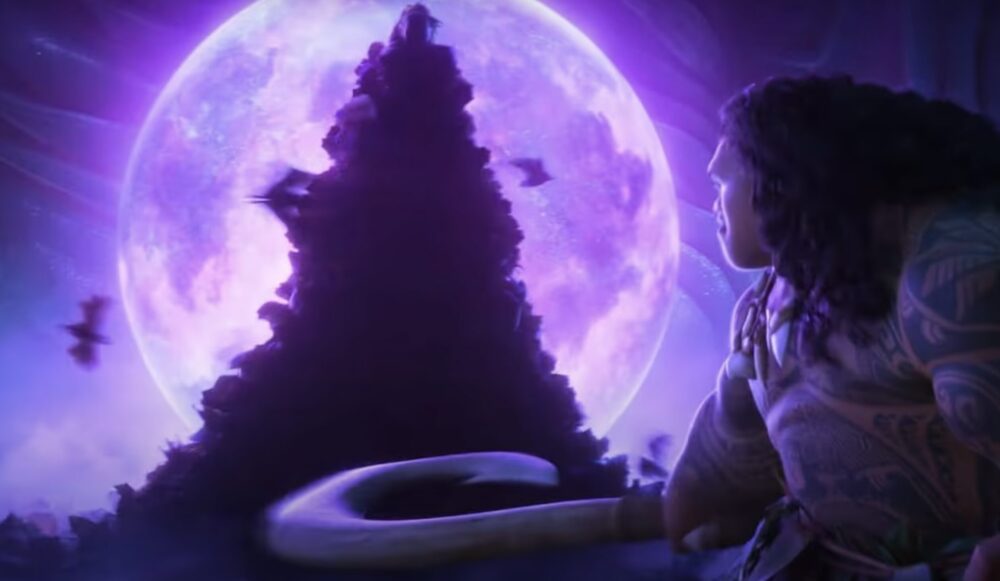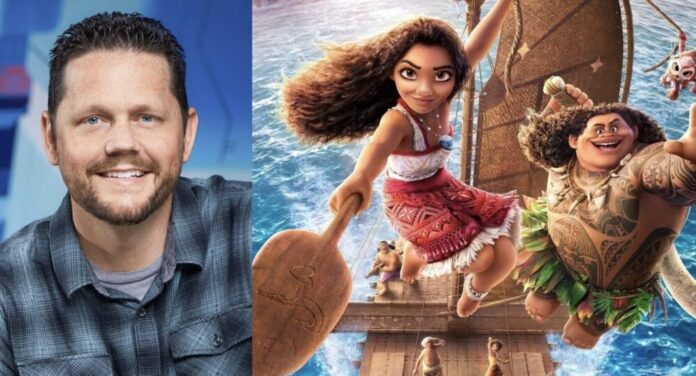As the year draws to a close, Disney’s Moana 2 continues to bring a record number of family audiences to theaters. This past week, the blockbuster sequel to the studio’s 2016 movie, landed at the number five spot at the U.S. box office, with a total domestic gross of the $394.6 million (after only 33 days since its release date) and a worldwide total of $882.5 million. We recently had the chance to chat with Disney veteran Jason Hand, who directed the movie with David G. Derrick Jr. and Dana Ledoux Miller. Hand, who was head of story on Encanto, story artist on Moana and storyboard supervisor on Ralph Breaks the Internet has been a longtime artist at the studio, working as layout artist on movies such as The Princess and the Frog, Winnie the Pooh, Big Hero 6 and Zootopia for the past two decades. Here is what the talented artist shared with us:
Animag: First of all, congrats on the phenomenal success of Moana 2. I guess we can begin by talking about how you became involved with this movie.
Jason Hand: Thank you so much. Well, I had just finished work on Encanto, which ended back near pandemic times and I was looking for my next gig. That’s when Dave Derrick gave me a call. He and I both worked on the first Moana movie. We went to CalArts together and have known each other for a very long time. He asked me to come on board on the new Moana project, which at that time was planned as a five-part TV mini-series. I was going to direct two of the episodes, and he would direct three. Once we started working on the story and the foundation, we realized that we could tell it in a better way in a feature format.
What do you think makes this movie and its characters so memorable?
Having worked on the first movie, I find that there’s so much to love about these characters and their world. First of all, I fell in love with Moana and Maui. I think Moana is such an amazingly aspirational character: That was obvious even from those early test stages. It was just a magical piece of work. It really set the tone for what the what the world was going to be and what the tone was going to be. I think there’s this amazing superpower that Moana has which is her empathy. Here you have a character that also just happens to be an amazing action hero as well and can sing great songs. I also particularly love Maui and that comedy that Dwayne [Johnson] brings to this role. He’s so funny in it. He’s just so full of charisma and energy and that really comes through in his voice.
I have to say the third element is the look of their world because it’s so beautiful. The visuals of the first movie still hold up even though it’s eight years gold. It’s simply gorgeous. As a filmmaker storyteller, there’s so many incredible elements and stories of the Pacific which have inspired both movies. As a person from outside this rich culture, I got to learn about this amazing culture and was really treated with generosity to hear the stories of the people of the Pacific. I also love musical storytelling: I think there’s such value in it and there’s an incredible amount of entertainment you get from this art form.

How was the work on Moana 2 divided between the three directors?
Directing one of these features is a very difficult thing to do. I have to say I would never want to make one of these films alone. There are too many decisions to be made. What we did that actually was the core of why it worked is that we worked in the story room together. Dave and I both came from story artist background, and Dana is obviously a writer and director as well. So, we just crafted the story together alongside Jared Bush and Jennifer Lee as well. We just banged it out together. The story room was the core for all of the answers to any department. We would divide and conquer it all together. There were no hard and fast rules. We were always in editorial together because that’s where we obviously put together the film. We always knew what the story point and the emotional journey of Moana had to be. That was our touchstone. We just talked a lot about all the different aspects: The key was always communication.
Perhaps you can you talk a bit about some of the visual challenges the team faced with the water and some of the new characters?
That was the exciting part right. When you’re coming into a sequel, you want to show the audience something new and different: We have more characters with Moana on the canoe, so that created its own challenges. Then, it’s really about the interaction between the world and the effects. I think if you look at the third act of the movie, it’s an effects character animation and lighting extravaganza. That was actually on purpose because we really wanted to push those ideas. So, the storm in particular was the most challenging part because we knew we had to take off from the first film and we needed to live up to that. There was just an epic quality to what we were doing. Obviously the technology has improved so much, and behind that technology we have our amazing artists who are pushing these things. You give the idea of a cursed storm to an effects artist, and they’re drooling for it because they want to make the coolest thing they’ve ever seen. They’re so self-motivated in that way. To be honest, the storm and all the amazing levels of artistry on display in those sequences completely blew us away. We never thought we could get something to look as amazing as that.

Moana 2 broke all kinds of box-office records over Thanksgiving and continued to be one of the most popular movies of the year. [It’s 2024’s second most popular animated movie, right after Inside Out 2 and fourth most popular movie at the U.S. box office, currently at $394.6 million nationally, and $882.5 million globally, as of 12/30 ] How do you feel about how audiences have embraced the film?
Obviously, that has been a dream come true. We worked on the movie and saw it come together for almost four years. The whole point of all the labor is to show it to an audience and hopefully to entertain an audience. I remember the premiere of the movie, which was was filled with so many of our Pacific Islander consultants and our cast in Hawaii . That was the first time we showed the complete movie, and when the lights came up and we saw the smile on everyone’s faces and how proud people were to have been part of it and see their culture represented in a way they felt was respectful and also fun and enjoyable. That was an incredible moment for all of us.
I also went to our local theater and watched it with a general audience during the opening weekend with my family in Simi Valley. It was a packed house, and we literally bought the last four tickets, and couldn’t even sit together. It was so wonderful to hear people laughing and stay emotionally engaged throughout the movie.

When did you first know that you wanted to work in animation?
I was born and raised in L.A., so I grew up driving by the Disney studio my entire life. I love that place, so it’s hard to describe when you have your childhood dream come true. That means so much to me and my parents who helped me so much along the way and my wife and two sons who supported me.
I remember growing up watching all the Looney Tunes cartoons. The Road Runner was a big favorite. I was and am a huge fan of Chuck Jones. I drew all those characters from a very early age, but I also loved filmmaking. I grew up up in an era where the Spielberg films really inspired my filmmaking drams. You could go to Universal Studios and see how those movies were made. I always loved to draw and I’m a rabid sketcher. I’ve made films my entire life, both animated and live-action, just because I love to do it.
I love the story of how you got your first job in animation. Can you share that with us.
It’s a very weird route. I actually started as a layout artist. It all happened because while I was a student at CalArts (California Institute of the Arts, Santa Clarita) I was also working at Kinko’s copy shop. One day, Bill Perkins, the art director of Aladdin came in and was photocopying some things. I just glommed on to him and started talking to him. He opened up a studio on Moorpark and I started working with him as a layout artist and background designer. I eventually got a job at Disney Toon studios and then worked my way through features. When I was working on The Princess and the Frog, I got an opportunity to enroll in the story training program at the studio. I learned from some of the best people in the business like Don Hall and Chris Williams, and by working alongside people like Norm Lemay. Honestly, the level of artistry especially in the story department is unlike anything at any other studio. So, it was a long route, but I loved it and I wouldn’t change anything. I learned so much as a layout artist (how to stage shots and how to cut between things, etc.) that I used as a director.
“What has always worked for me is to follow my inner voice. That can be sometimes hard to do as an artist and a filmmaker, but if you do that, you’ll do your most honest and best work.”
— Director Jason Hand
What is your take on the overall state of animation in 2024?
Obviously, there is a rich range of animated movies and TV shows out there, and we don’t know what the future is going to be, I will say that I’m so proud to be part of the group of filmmakers who had animated movies released. We have a very close relationship with Pixar, and I’m so proud of what they were doing and to see them have such a hit was very inspiring for all of us. I also love Chris Sanders’ work and I think The Wild Robot is an amazing film. I look forward to seeing Flow very soon. I haven’t seen everything yet, but I look forward to catching up because I’ve been in Moana-land. The fact is that that there are so many different kinds of animation available for audiences to enjoy all over the world. Then, there’s the question of A.I.: We’re still making tools for people at our studio to make good animation as artists, and that interaction has never failed us before. So, I can’t see that changing, but you know, obviously, I can’t predict the future.
OK, one last question before we let you go! Can you offer some tips for future animation creators who are perhaps working at Kinko’s, hoping to get their big breaks?
I think there’s always value in to doing the work yourself and working really hard because, no matter what, you can’t learn it until you do it and that’s the truth of the matter. There’s that [Malcolm Gladwell’s rule] 10,000 hours required to do something before you become an expert. I know there’s some truth to that. I mean, this is literally my 20th year at Disney animation. It proves that it took a long time for me to get to where I am. I had a lot of failures along the way, but I didn’t let those stop me. I just tried to learn from them and keep working at it, even though it’s hard sometimes. What has always worked for me is to follow my inner voice. That can be sometimes hard to do as an artist and a filmmaker, but if you do that, you’ll do your most honest and best work.
Moana 2 is currently playing in theaters worldwide.




